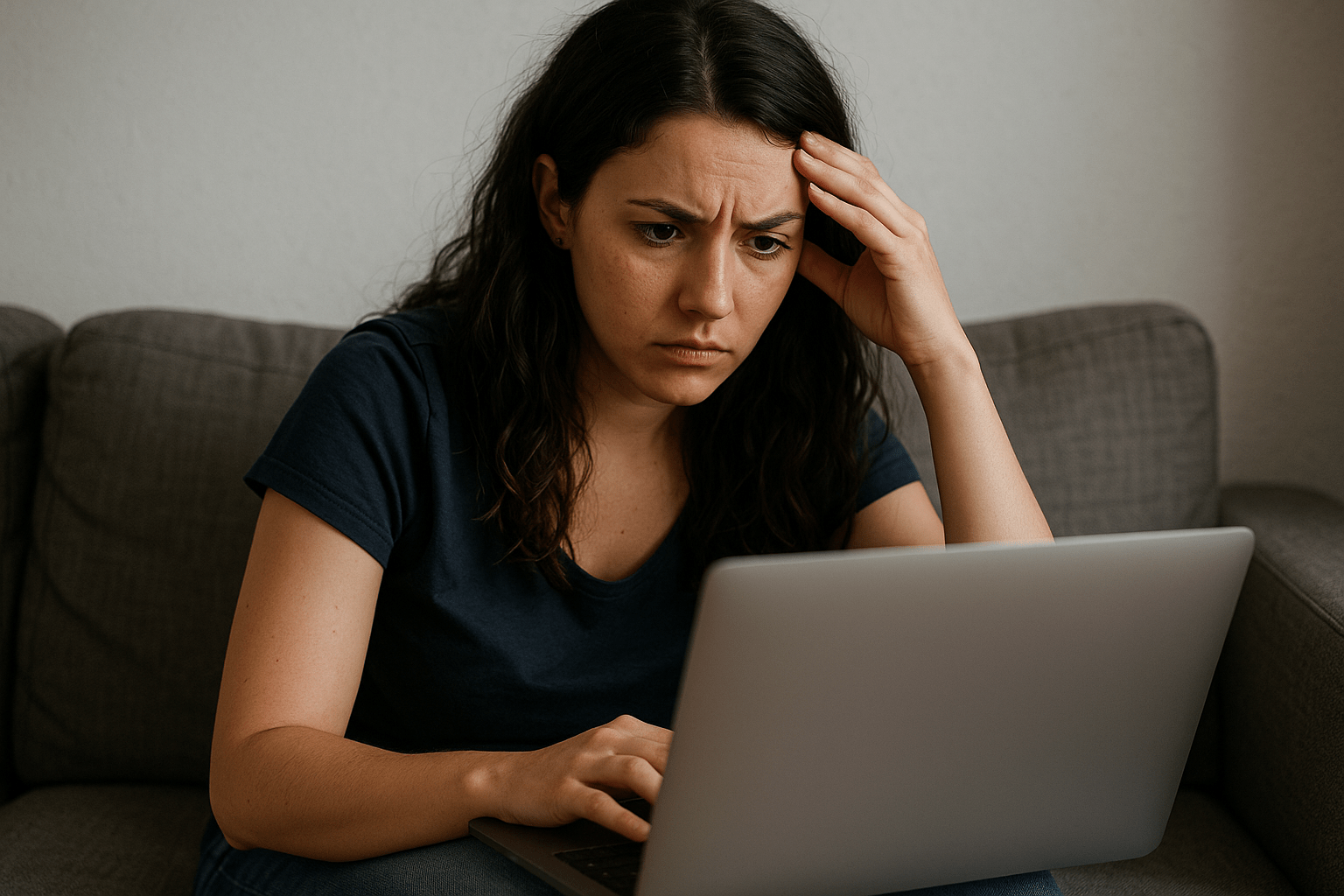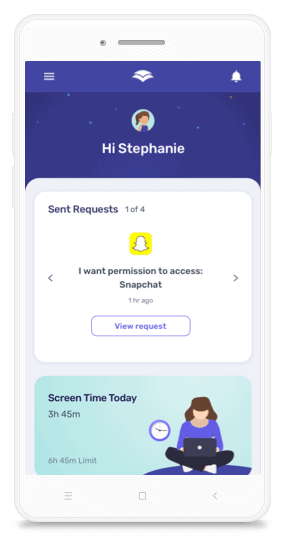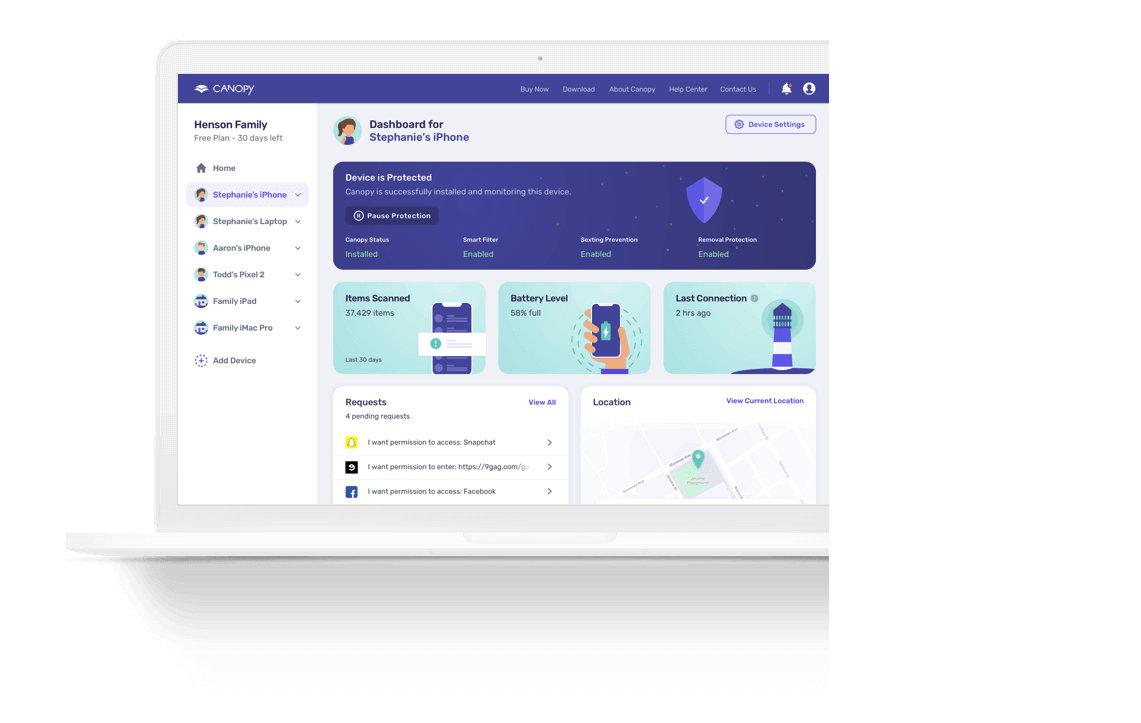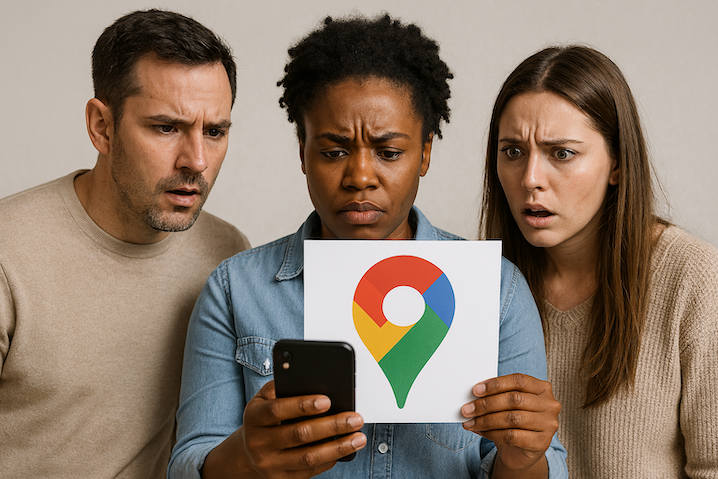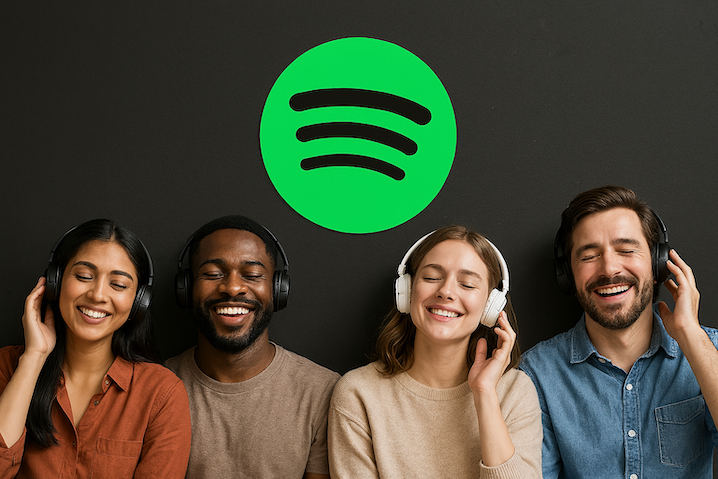If you’re reading this, there’s a good chance you’ve had nights where your “bad habit” pushed you into autopilot – one more scroll, one more tap, and suddenly an hour is gone. As women, we’re often told this struggle isn’t “for us,” which can make female porn addiction feel invisible and isolating.
This guide is written from a woman-to-woman perspective, with compassion and practicality. We’ll tell you what porn addiction in women can look like, why the vicious cycle can take over, and how to reclaim your attention, sleep, relationships, and self-respect – without relying on willpower alone.
You’ll find a balanced mix of information and concrete steps. We’ll talk about the real drivers behind your addiction (stress, loneliness, trauma, novelty-seeking), the moments of choice that matter most, and the guardrails that you can implement to make change stick.
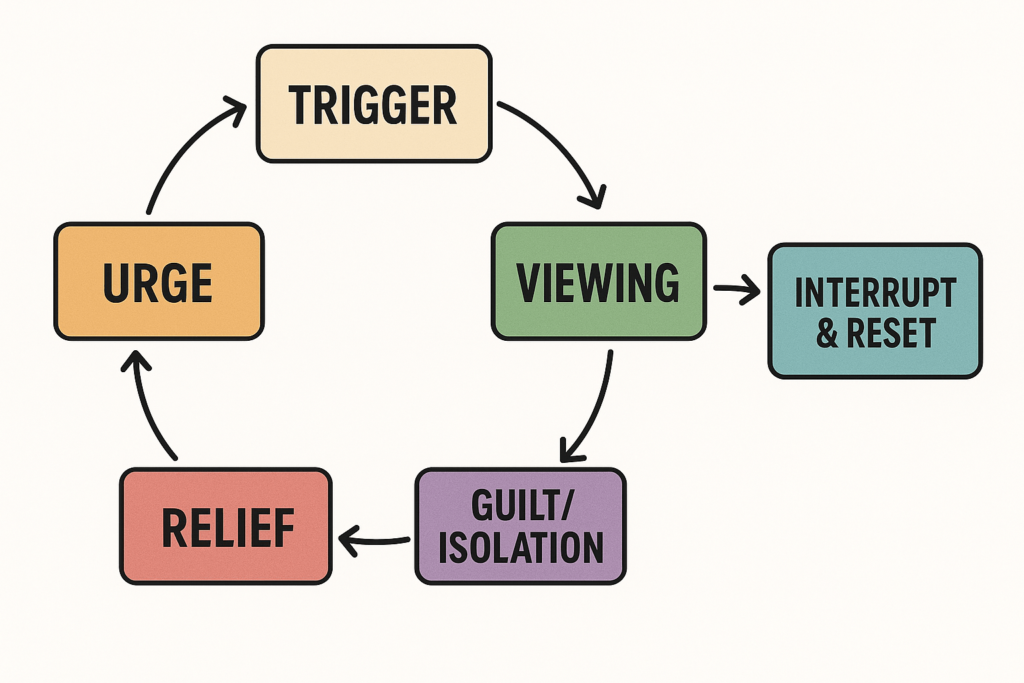
Do Women Get Addicted to Porn?
Short answer: yes — porn addiction in women is very real. The stereotype that only men struggle with pornography addiction keeps many women silent, ashamed, and isolated. This silence allows the habit to escalate unnoticed.
A common pattern begins with “soft” entry points—erotica, algorithmic For You feeds, or even porn on Pinterest, Spotify, or Google Maps, where suggestive content often hides in plain sight. These might seem harmless at first, but they can gradually lead to compulsive use.
And here’s something important: your brain isn’t broken. It has simply learned that porn offers fast relief. So the question isn’t “Is watching porn bad for your brain?” but rather: what does porn do to the brain when used repeatedly for stress relief?
Over time, this shortcut rewires the brain’s reward system, reinforcing a cycle that becomes hard to break. That’s why quitting porn isn’t just about willpower—it’s about replacing it with healthier, more sustainable coping tools. And yes, it’s absolutely possible.
Signs of Porn Addiction in Women
Some signs are obvious. Others are subtle—and easy to justify. If you’re unsure whether it’s time to make a change or if you’re wondering how to stop watching porn, these signals can help clarify:
- Time-loss that keeps getting worse – “just a minute” becomes an hour. Bedtime gets later and later.
- Escalation – searching for more novel or intense content to feel the same effect as before.
- Failed attempts at cutting back – vowing to stop without a plan that actually works when you’re feeling tired and vulnerable.
- Secrecy – incognito/guest modes, deleting history, hiding devices or passwords.
- Physical effects – sleep loss, fogginess and lack of focus, procrastination, short temper.
- Strain on relationships – pulling away, emotional distance, defensiveness if asked about online activity.
- Withdrawal-like irritability or restlessness when you try to cut back.
These aren’t just habits — they’re red flags that your brain’s reward system is misfiring, especially when paired with secrecy or shame. If this sounds familiar, it’s time for a structured change. Using a porn blocker can help you build healthier digital habits while removing temptation.
Underlying Causes of Female Porn Addiction
There usually isn’t one cause. Most women with porn addiction describe several contributing factors that are most destructive when combined.
- Stress & emotion regulation. Porn becomes a quick, private way to push aside negative feelings.
- Loneliness & fear of rejection. Digital intimacy can feel a lot safer than risking rejection.
- Trauma echoes. Compulsive sexual behavior sometimes acts like a fast anesthetic.
- ADHD/novelty-seeking. Infinite novelty online can get you into a quick dopamine loop.
- Depression & low energy. When you’re feeling emotionally depleted, “slow” coping tools feel like a worse choice than “fast” ones.
- Perfectionism. The “I already blew it” script that turns a one-time slip into a binge.
- East access. Unfiltered devices and personalized feeds are always one tap away.
When you understand the ingredients of your addiction, you can change the recipe.
Impact on Mental Health and Relationships
Compulsive use doesn’t just waste time; it reshapes your internal mood. Many females addicted to porn report anxiety, depression, and disrupted sleep, which then erodes patience and focus the following day. Secrecy contributes to brain overload and chips away at self-trust. Over time, your brain learns to chase on-demand novelty instead of settling into the slower, more textured intimacy of real life. That can affect desire with a partner or make presence harder during sex.
The longer the habit goes unchecked, the more it rewires your ability to focus, delay gratification, or feel satisfied with real-life intimacy. So yes — porn is bad for your brain when it’s used compulsively. And also, porn in relationships often becomes a barrier to honesty, trust, and sexual connection. Many partners report feelings of betrayal or inadequacy.
Fixing this is absolutely possible. It starts with clarity — understanding what happens, when, and why — followed by implementing guardrails that are visible and consistent. Trust is rebuilt the same way the habit was built: repetition.
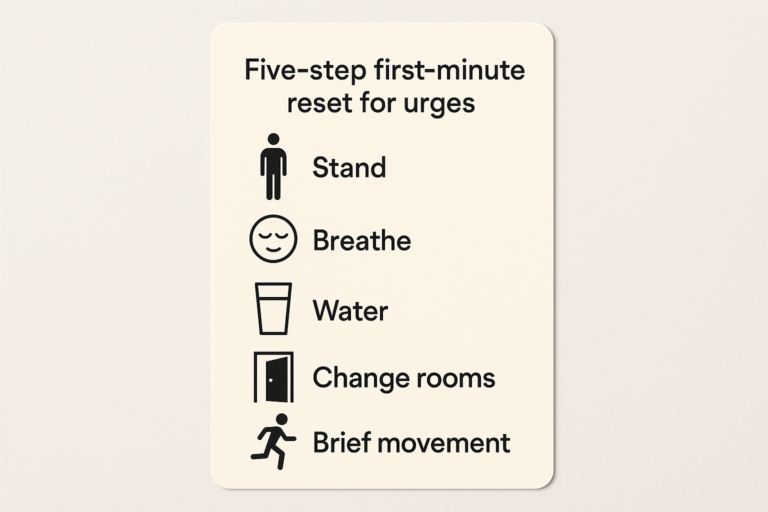
How Women Can Start Recovery
You don’t need a surge of motivation. You need a plan that survives past 10 p.m. and is easily repeatable.
Start by defining success in behaviors you can observe. “Never feel tempted” isn’t a plan. “No porn on my phone,” “no explicit searches after 10,” or “run my 60-second reset when an urge hits” are plans. Feelings tend to follow actions, not lead them.
Map your vulnerable windows: late nights, post-argument, remote-work boredom, certain rooms, specific apps or creators. Give each window a simple first-minute reset you’ll run before deciding anything:
- Stand up and change rooms.
- Sip water and exhale slowly (4-4-6-2 breathing).
- Do one brief movement (stairs, squats, stretch).
- Wait 90 seconds. Urges crest and fall when you don’t feed them.
- If you have an accountability contact, send a single emoji to prompt a quick “hey.”
Then redesign your environment like an architect, not a bouncer. Add friction to risky paths; remove friction from helpful ones:
- Add friction to triggers: sign out of the 2–3 apps that most often lead you to explicit content; disable guest modes; charge your phone outside the bedroom; grayscale after 9 p.m.
- Remove friction to supportive items: put a paperback and water by the bed; queue a calming playlist on a speaker; keep a pen and notebook on your nightstand.
Bring technology over to your side. Use Focus/Downtime modes so your phone helps you say “not tonight.” A dedicated porn blocker that analyzes content before it loads ends the debate early—explicit images and videos never appear, and the “just this once” spiral doesn’t get rolling. App controls that block or time-box problem platforms protect your hardest hours. And if you’re on a Mac, here’s how to block porn on Mac to reinforce those boundaries.
Finally, add a human. Tell one trusted person what you’re doing and schedule a five-minute weekly check-in. If your relationship has been affected, share the plan (not necessarily in graphic detail) and propose two supports you actually want—phones charging outside the bedroom; a Sunday “what worked” huddle. Therapy can help you tackle deeper drivers while your daily structure keeps you steady.
A gentle 30/60/90-day arc
- Days 1–30: Stabilize. Protect sleep, enforce Downtime, practice the first-minute reset nightly, and remove the top two trigger apps.
- Days 31–60: Skill up. Add a weekly therapy/support session, light movement most days, and a screen-free evening ritual that feels like self-care.
Days 61–90: Momentum. Keep blockers on, add one social anchor/week, and rehearse your routine even on “good” days. If you slip, ask: Which domino fell first? Adjust that one.
Healthy Alternatives to Porn for Women
Abstaining without replacing is a setup for relapse. Your body and mind still need relief, pleasure, and connection—delivered in ways that align with your values.
- Regulate the body: post-dinner walks, light strength work, a short yoga flow, or hot-then-cool water cues to downshift arousal.
- Rebuild connection: put one small social plan on the calendar each week (friend walk, class, volunteer hour). Don’t wait to “feel like it.”
- Feed creativity: paper reading, journaling, sketching, baking, photography walks, learning a song – activities that absorb attention without sexualizing it.
- Nervous-system soothers: tea + paperback, a gentle playlist on a speaker, skincare or stretch routines that help you inhabit your body kindly.
And don’t forget — many teens watching porn started out by accident. Having tools and habits in place now helps avoid reactive cycles later in life.
How Many Women Are Addicted to Porn?
You’ll see very different numbers because studies define “addiction” differently and often rely on self-report, where women are historically undercounted. The honest answer is: can women be addicted to porn? Yes. How many women are addicted to porn? We don’t know precisely.
And it’s not just women. There’s growing concern around children watching porn accidentally or compulsively — especially without filters in place.
What matters for your next step is your quality of life: Is your use costing sleep, focus, honesty, or intimacy? If yes, you qualify for help, statistics or not.
When to Consider Professional Help
Sometimes a compassionate checklist makes the decision clearer:
- Urges feel unmanageable or escalate despite your efforts.
- Porn use is entwined with trauma, anxiety, depression, or OCD.
- You’re hiding large parts of life from loved ones, or trust is breaking.
- You’ve tried to quit repeatedly without traction.
- You’re watching porn during work/school or in risky settings.
Therapy isn’t a judgment on your worth; it’s a tool to move faster with less turmoil. Couples counseling can help if trust needs rebuilding—focused on boundaries and repair, not blame.
How to Talk with a Partner (or Trusted Friend)
Honesty lands best when it’s contained, concrete, and followed by action. A simple structure helps:
- Lead with your goal. “I want to feel present and confident; this habit is in the way.”
- Name the pattern briefly, without graphic detail.
- Share your plan: environment changes, device guardrails, a blocker, a weekly check-in.
- Ask for two supports: phones out of the bedroom; a five-minute Sunday review.
- Set boundaries that protect both of you: accountability without shaming.
You’re responsible for recovery. You don’t have to accept punishment. Collaboration beats confession without change.
Make Your Devices Work for You (Not Against You)
Think like a designer: change the defaults so the easiest choice helps you win.
- Automate nights: Do Not Disturb, Downtime/Focus modes, app limits after 9–10 p.m
- Remove paths: log out of triggering sites, delete two high-risk apps for a season, and disable guest modes.
- Rearrange: essentials on the front screen; everything else buried. Try grayscale at night.
- Physical cues: phone charging away from the bed; wear a basic watch so “checking the time” isn’t a feed trap.
Dedicated porn blocker: Tools that analyze content before it loads will block explicit images/videos on the web and in many in-app browsers, ending the “should I/shouldn’t I” spiral early. Some add app blocking and time boxes tailored to your hardest hours.
Where Canopy Fits
If you want technology that respects your values, Canopy is built with you in mind. Its real-time filtering blocks explicit images and videos before they appear, so late-night negotiations don’t even start.
App Controls let you block or time-box the platforms that pull you off course. You keep what you need for work, school, maps, music—and you lose the autoplay rabbit holes and explicit detours. The result is quiet: fewer “almosts,” more sleep, steadier self-trust.
A 7-Day Jumpstart
Treat the next week like a kind of experiment. Keep it simple and repeatable.
- Day 1 — Why & Guardrails: Write a short “why” note. Install filtering, set Downtime, and move your charger out of the bedroom.
- Day 2 — Environment: Grayscale after 9 p.m.; place a paperback and water by the bed; cue a relaxing playlist on a speaker.
- Day 3 — Rehearsal: Practice your first-minute reset once in daylight so it’s ready at night.
- Day 4 — Sleep: Set a lights-out alarm 45 minutes before bed and honor it.
- Day 5 — Connection: Put one small social plan on the calendar (walk, class, coffee).
- Day 6 — Movement: Move for 20 minutes and notice how urges shift afterward.
- Day 7 — Review: What helped? What time was hardest? Tweak guardrails and repeat.
If you slip, zoom in on the minute before it happened. What small change—moving a charger, deleting one app, texting a friend—would tip that moment in your favor next time? Curiosity beats condemnation, every time.
FAQs
Can women be addicted to porn?
Yes. The pattern in women includes cravings, using more than intended, escalation, secrecy, and continuing despite harm. The route in may differ (e.g., erotica or social feeds), but the habit loop is the same—and it’s reversible.
What are common signs of porn addiction in women?
Time loss, agitation when trying to abstain, escalating searches, hiding devices, sleep loss, and strained relationships. If your use routinely beats your intentions, build a plan—not just willpower.
How many women are addicted to porn?
There’s no reliable single number due to varying definitions and underreporting. If your use is harming sleep, work, study, or relationships, that’s enough reason to act, regardless of statistics.
Do women get addicted to porn differently from men?
The mechanism is similar; the on-ramp can look different. Women often arrive via “softer” content or social feeds that escalate over time. Effective recovery tools — environmental redesign, blockers, skills, and support—are the same.
What’s the first step to stop?
Protect sleep and evenings, add a first-minute reset for urges, reduce easy access (apps, log-ins), and install a dedicated blocker. Tell one trusted person and set a weekly check-in. Small, repeatable steps compound.
